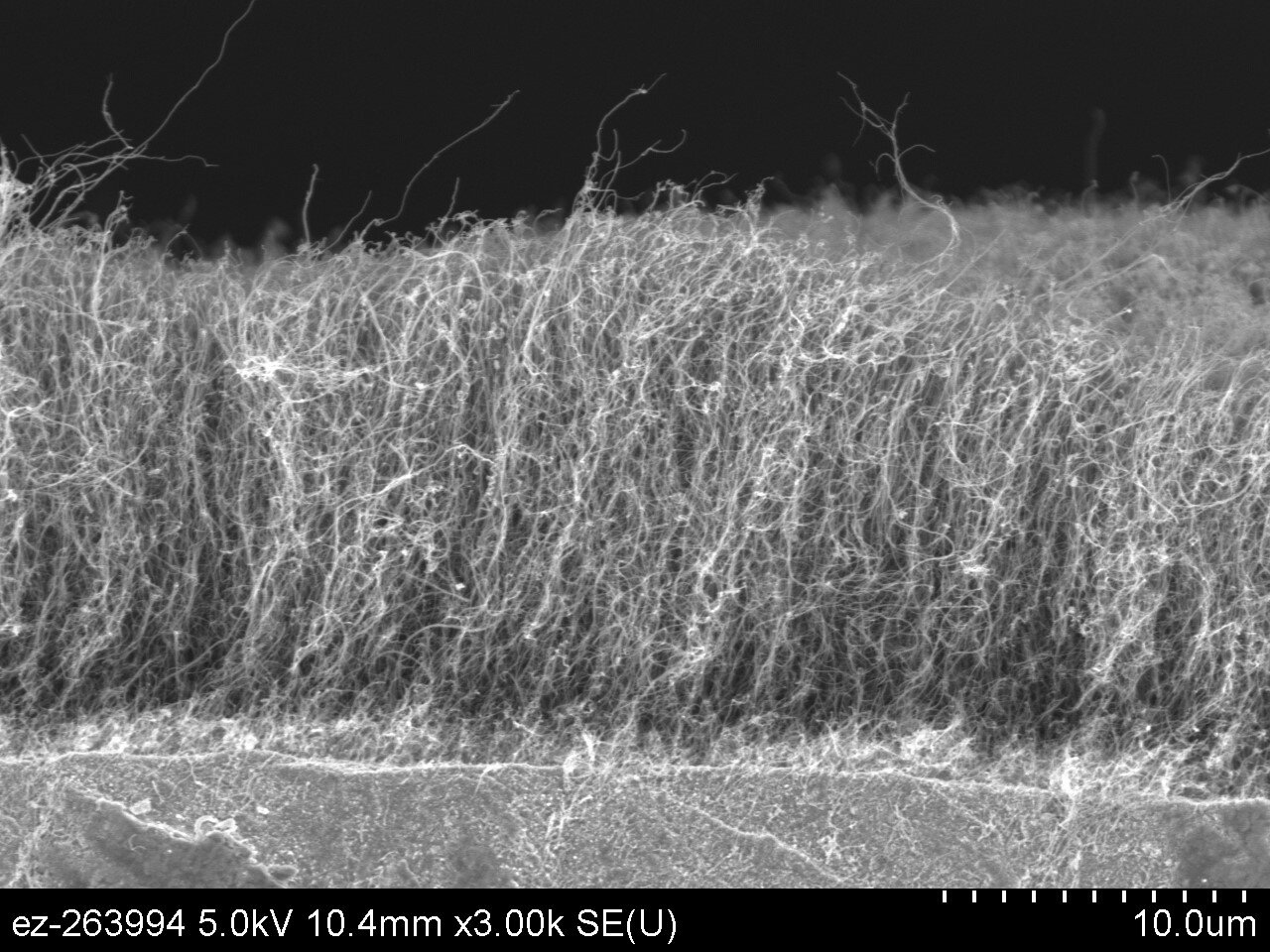Scientists at the Department of Energy’s Oak Ridge National Laboratory have developed a coating made of carbon nanotubes that can significantly reduce friction in common load-bearing systems with moving parts, such as vehicle drive trains and wind and hydroelectric turbines. This coating can reduce the friction of steel rubbing on steel by at least a hundredfold, potentially helping to reduce the more than $1 trillion lost to friction and wear in the U.S. economy each year, which is equivalent to 5% of the gross national product.
“When components are sliding past each other, there’s friction and wear,” said Jun Qu, leader of ORNL’s Surface Engineering and Tribology group. “If we reduce friction, we can reduce energy consumption. If we reduce wear, we can elongate the lifespan of the system for better durability and reliability.”
Qu and his colleagues Chanaka Kumara and Michael Lance published a study in Materials Today Nano about the coating, which imparts superlubricity to sliding parts. Superlubricity is the property of showing virtually no resistance to sliding, with a coefficient of friction less than 0.01. The ORNL coating reduced the coefficient of friction far below the cutoff for superlubricity, to as low as 0.001.
“Our main achievement is we make superlubricity feasible for the most common applications,” Qu said. “Before, you’d only see it in either nanoscale or specialty environments.”
For the study, Kumara grew carbon nanotubes on steel plates and used a tribometer to make the plates rub against each other to generate carbon-nanotube shavings.
2023-06-07 19:00:04
Link from phys.org rnrn
